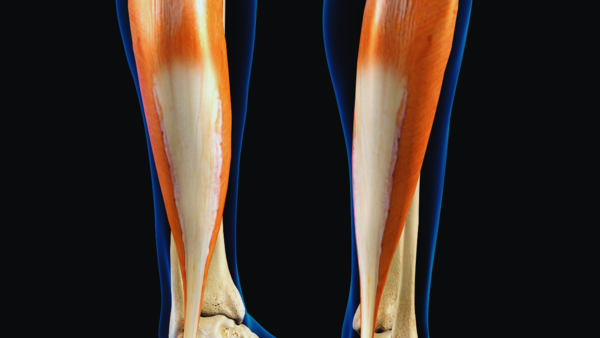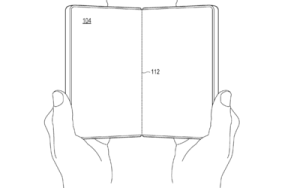Imagine lowering your blood sugar levels by up to 52% with a simple seated exercise. New research suggests that performing calf raises while sitting can significantly impact your blood glucose levels. This low-effort activity involves rhythmically lifting your heels while keeping the balls of your feet on the floor, engaging your calf muscles even while seated. Experts emphasize that these movements activate the soleus muscle, a key player in blood sugar regulation.

What makes this technique appealing is its accessibility. It requires minimal effort, no special equipment, and can be done without even standing up. This makes it an ideal exercise for individuals with limited mobility or those with sedentary lifestyles. Incorporating these movements during prolonged periods of sitting, such as watching television, working at a desk, or even during car travel, could lead to noticeable improvements over time for individuals with elevated blood sugar or those in prediabetic stages.
A peer-reviewed journal published in the National Library of Medicine indicates that the soleus pushup, a form of seated calf raise, can boost local oxidative metabolism and enhance blood sugar levels. The soleus muscle is uniquely designed for efficient, long-duration work without tiring, unlike most other muscles that fatigue quickly. The study revealed that this movement increases glucose uptake without relying on glycogen stores, making it an effective strategy for managing postprandial blood sugar spikes.

The power of the soleus muscle is often underestimated, overshadowed by larger leg muscles such as the quadriceps. However, a recent study published in iScience and hosted by the National Institutes of Health (NIH) describes the soleus as a metabolic powerhouse. Unlike other muscles, the soleus can sustain low-intensity contractions for extended periods without fatigue and support glucose and lipid regulation.
The study coined the term "soleus pushup" (SPU) for this seated movement and demonstrated that it boosts oxidative metabolism even more than standing or walking. Researchers observed an average reduction in blood glucose by 52% and a 60% reduction in insulin levels when the SPU was performed during prolonged sedentary periods.
No special equipment, standing, or gym routines are necessary. Simply perform soleus pushups while seated by slowly lifting your heels up and down to improve blood glucose and fat metabolism throughout the day. Researchers highlighted the benefits of this exercise even during prolonged sitting, such as office work or watching television.
For individuals with prediabetes, Type 2 diabetes, or sedentary lifestyles, this simple movement could be a low-effort, high-impact addition to their daily routines. Study participants experienced glucose reductions of up to 52% in some cases when consistently using the soleus pushup method.
While this exercise is not a replacement for healthy eating, medication, or regular physical activity, experts suggest that soleus activation can complement existing glucose control strategies. Consider it a silent, biological trick that works while you sit.
Newer articles
Older articles
 Vitamin D Could Slash Tooth Decay Risk by 50%, Study Suggests
Vitamin D Could Slash Tooth Decay Risk by 50%, Study Suggests
 Indian Cricket Star Mukesh Kumar and Wife Divya Singh Announce Birth of Son
Indian Cricket Star Mukesh Kumar and Wife Divya Singh Announce Birth of Son
 Shubman Gill's Captaincy Under Fire: Bold Calls Needed After England Test Defeat
Shubman Gill's Captaincy Under Fire: Bold Calls Needed After England Test Defeat
 Microsoft Aims for Foldable Redemption with Novel Hinge Design to Rival iPhone and Android
Microsoft Aims for Foldable Redemption with Novel Hinge Design to Rival iPhone and Android
 Popular Finance YouTuber's Account Hacked, Bitcoin Scam Promoted: Security Lessons Learned
Popular Finance YouTuber's Account Hacked, Bitcoin Scam Promoted: Security Lessons Learned
 Esha Gupta Breaks Silence on Hardik Pandya Romance Rumors: 'We Were Just Talking'
Esha Gupta Breaks Silence on Hardik Pandya Romance Rumors: 'We Were Just Talking'
 Hollywood's Love Affair with India: Iconic Film Locations Revealed
Hollywood's Love Affair with India: Iconic Film Locations Revealed
 Rishabh Pant Aims to Surpass Virat Kohli in Test Century Tally During England Series
Rishabh Pant Aims to Surpass Virat Kohli in Test Century Tally During England Series
 Prithvi Shaw Credits Sachin Tendulkar's Guidance for Career Revival After Setbacks
Prithvi Shaw Credits Sachin Tendulkar's Guidance for Career Revival After Setbacks
 Ashada Gupt Navratri 2025: Unveiling Dates, Timings, Significance & Secret Rituals
Ashada Gupt Navratri 2025: Unveiling Dates, Timings, Significance & Secret Rituals